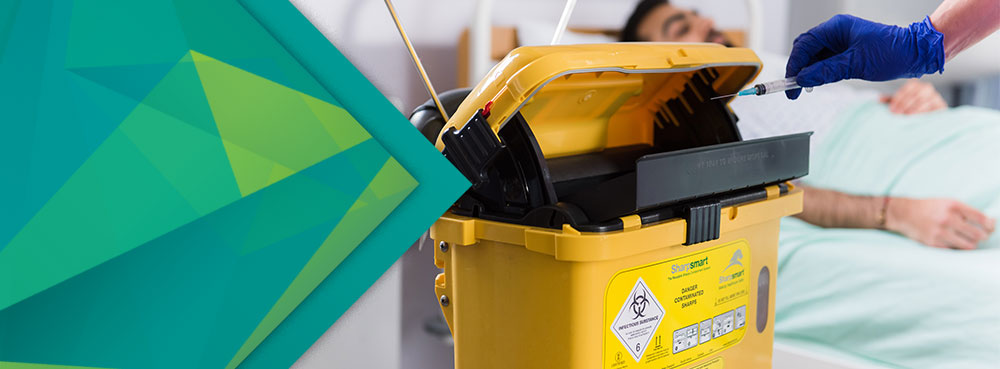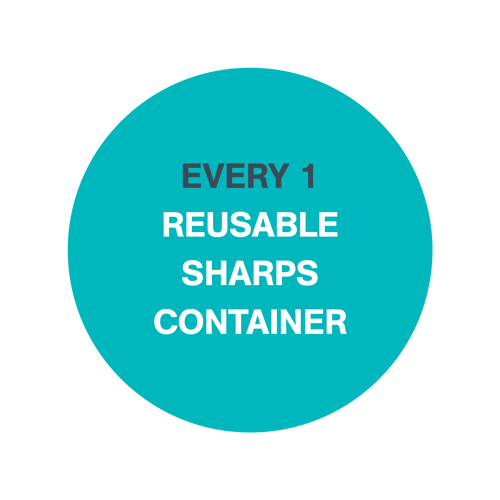Case Study: Reusable Sharps Containers at UHCW NHS Trust

This case study explores the outcomes of a sustainability assessment of Sharpsmart reusable containers at University Hospitals Coventry & Warwickshire NHS Trust (UHCW). The analysis by Sustainability West Midlands (SWM) considered the environmental, economic and social implications of the reusable containers.
In this Blog:
- The Challenge: Single use containers
- Our Approach: Switching to a reusable container system
- Our Solution: Reduce CO2 emissions
- The Results: Economic and social benefits


Prior to adopting a reusable containment system, the Trust had used sharps containers that were disposed of after each use, generating a lot of uncessesary paper and plastic waste. The Trust sought an alternative that could be washed and reused, reducing waste while potentially saving money and carbon emissions.

After the Trust adopted reusable containers, the hope was that this would reduce the total number of containers needed, resulting in both cost and carbon savings. A study conducted in 2014 for the Trust by Sharpsmart and Waterman Environmental Ltd (SWM) included a barrier constrained life cycle assessment (LCA) projection of the likely impact of introducing reusable containers in comparison with the disposable containers. SWM reviewed this study, taking account of the ‘Greenhouse Gas Accounting Sector Guidance for Pharmaceutical Products and Medical Devices’ guidance produced by the Sustainable Development Unit (SDU) to assess the methodology for completeness and appropriateness, and ensure that the model uses the latest data in relation to carbon emissions.
Sharpsmart updated all aspects of the model. This included considering the emissions from fuel, electricity, washing of bins, waste disposal (incineration), transport (via air, shipping, and road transport) and raw material production (main plastic component of the containers). The analysis was also updated to include the number of containers installed and used over the previous 12 months at UHCW.
Additionally, the containers have safety features that may also result in fewer sharps injuries. SWM visited the Trust, who used data from the Occupational Health Team on the number of sharps injuries and interviewed individuals involved in the use of the reusable sharps containers to assess this benefit.


The life cycle assessment projected over a ten-year period that the containers will reduce CO2e by 2,053 tonnes, equating to a 92% reduction when compared to single-use bins. There has been an economic saving of around £20,000 per annum as a result of introducing the containers. Before the introduction of the new bins there were an average of 3.2 injuries per quarter associated with disposal of sharps into the sharps containers. After introduction, this figure dropped to an average of 1 per quarter.

This study was successful due to the cooperation of all partners included, who were transparent with the sharing of information and modelling, and staff at the Trust who shared both experiences and data. The results for University Hospitals Coventry & Warwickshire NHS Trust are unique to their circumstances. Other Trusts considering the use of reusable sharps containers should consider aspects such as proximity to waste treatment facilities, opportunities to minimise waste, and limitations to the roll-out of new bins when analysing their options. In order to identify the potential for environmental, economic and social benefits across the NHS more widely, data on total sharps container usage is required.
